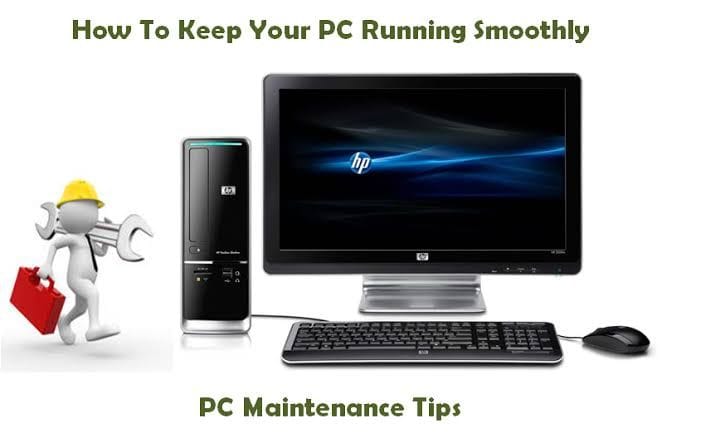Laptops are essential tools in today’s digital world, but like all technology, they can become sluggish over time. Whether you’re working, gaming, or streaming, a slow laptop can be frustrating. The good news is that you don’t have to replace your entire laptop to improve its performance. With some basic know-how and a few budget-friendly upgrades, you can breathe new life into your device and make it run like new.
In this guide, we’ll cover the most cost-effective DIY upgrades that will boost your laptop’s performance without requiring you to break the bank. From memory upgrades to storage enhancements, here’s how to improve your laptop’s speed and efficiency on a budget.
1. Upgrade Your RAM (Memory)
Why Upgrade:
RAM (Random Access Memory) is crucial for your laptop’s performance, particularly when it comes to multitasking. If you notice your laptop slows down when you have multiple tabs open or use memory-intensive apps, upgrading your RAM is one of the most effective ways to increase speed.
How to Upgrade:
- Check Compatibility: Before purchasing additional RAM, make sure your laptop supports more memory. Most laptops have a maximum RAM limit, and you’ll need to find the correct type (DDR4, DDR3, etc.) and speed for your model. Tools like Crucial’s System Scanner or Kingston’s Memory Finder can help you find compatible RAM.
- Installation:
- Turn off the laptop and unplug it.
- Remove the battery (if removable).
- Open the bottom panel (using a screwdriver if needed).
- Locate the RAM slots and remove the existing modules (if upgrading).
- Insert the new RAM sticks and secure them into place.
Budget Tip:
While 8GB of RAM is usually sufficient for most users, upgrading to 16GB can make a significant difference for gamers, creatives, or professionals working with large files.
2. Switch to a Solid-State Drive (SSD)
Why Upgrade:
One of the best upgrades you can make is swapping out your laptop’s traditional hard disk drive (HDD) for a solid-state drive (SSD). SSDs are much faster than HDDs, significantly improving boot times, file transfer speeds, and overall system responsiveness.
How to Upgrade:
- Choose the Right SSD: Ensure the SSD is compatible with your laptop’s storage bay (2.5-inch SATA, M.2, or PCIe NVMe). M.2 or PCIe NVMe SSDs are faster than traditional SATA SSDs but may require a more recent laptop with the appropriate slot.
- Clone Your HDD: Before swapping drives, you can use software (like Macrium Reflect or Acronis True Image) to clone your existing HDD to the new SSD. This way, you won’t need to reinstall your operating system or files.
- Installation:
- Power off the laptop, remove the battery (if possible), and unplug the device.
- Open the laptop’s bottom panel and locate the current HDD.
- Remove the HDD and replace it with the SSD.
- Reassemble the laptop and boot it up.
Budget Tip:
If you’re on a budget, you can opt for a smaller SSD (250GB or 500GB) to store your operating system and frequently used programs, while leaving your HDD in place for larger files like videos and documents.
3. Replace Your Laptop Battery
Why Upgrade:
Over time, your laptop’s battery capacity degrades, leading to shorter battery life. If you find yourself constantly needing to charge your laptop, replacing the battery can offer better performance and more usage time, especially when you’re on the go.
How to Upgrade:
- Find a Replacement Battery: Search for a compatible replacement battery for your laptop model on reputable sites like Amazon, eBay, or the manufacturer’s website. Ensure it’s a genuine or high-quality third-party battery.
- Installation:
- Power off the laptop and remove the battery (if removable).
- Insert the new battery and reassemble the laptop.
Budget Tip:
If your laptop has an integrated battery, replacing it might be a bit more challenging. However, this upgrade is still affordable compared to buying a new laptop. You can often find guides on YouTube or manufacturer websites for specific models.
4. Upgrade to a Larger Storage Drive
Why Upgrade:
If you’re running out of space or want faster access to your files, upgrading your storage can help. While SSDs are faster, if you need a large amount of storage, a hybrid approach might be your best bet—an SSD for your operating system and a large HDD for files.
How to Upgrade:
- Choose the Right Storage: If your laptop supports dual drives (an SSD and an HDD), you can install both. Otherwise, you’ll need to swap your existing HDD with a larger SSD or HDD depending on your preference for speed vs. space.
- Installation:
- Turn off the laptop and unplug it.
- Open the bottom panel and locate the storage bay.
- Remove the old drive and insert the new one.
Budget Tip:
A 1TB HDD is affordable for those who need a lot of storage, but if speed is more important, go for a 500GB SSD. You can also use external storage solutions for additional space if your laptop only has one drive slot.
5. Upgrade Your Laptop’s Cooling System
Why Upgrade:
If your laptop tends to overheat, it can throttle performance, making it slower or causing it to shut down unexpectedly. Adding a cooling pad or replacing thermal paste on the CPU can help keep temperatures in check and improve overall performance.
How to Upgrade:
- Cooling Pad: A simple solution is to invest in a laptop cooling pad, which provides additional airflow under the laptop. These are inexpensive and portable, making them an easy upgrade for travelers.
- Thermal Paste: If you’re comfortable opening up your laptop, replacing the old thermal paste on the CPU can improve heat transfer and prevent overheating. Apply a small amount of high-quality thermal paste (like Arctic Silver 5) to the processor and reassemble the laptop.
Budget Tip:
Cooling pads are generally inexpensive (ranging from $20 to $50), while replacing thermal paste can cost you less than $10 in materials, making both affordable options.
6. External Peripherals: Increase Productivity
Why Upgrade:
While not an internal upgrade, adding external peripherals like a mouse, keyboard, or external monitor can dramatically improve your productivity and comfort while working on your laptop.
How to Upgrade:
- External Keyboard/Mouse: A wireless or wired keyboard and mouse can enhance comfort, especially if you’re working long hours.
- External Monitor: If you need more screen real estate, an external monitor can give you a dual-screen setup. Many modern laptops support multiple displays via HDMI or USB-C.
Budget Tip:
You can find affordable external monitors starting at around $100. Similarly, basic wireless keyboard and mouse combos are available for as little as $20.
7. Reinstall or Upgrade Your Operating System
Why Upgrade:
If your laptop is running sluggishly or if you want to optimize performance, reinstalling your operating system can help. Over time, files and apps build up, slowing down your laptop. A fresh OS install can clear out clutter and help your system run faster.
How to Upgrade:
- Reinstall OS: You can reinstall the latest version of Windows or macOS. For Windows, simply download the media creation tool and follow the instructions to perform a clean install. On a Mac, you can use macOS Recovery to reinstall macOS.
- Upgrade to Latest Version: If you haven’t updated your operating system in a while, doing so can provide performance improvements and new features.
Budget Tip:
Reinstalling the OS is completely free, and it can give your laptop a new lease on life by clearing out old files, removing bloatware, and optimizing the system.
Conclusion
Upgrading your laptop doesn’t always require a hefty investment. With a few simple and budget-friendly DIY upgrades, you can significantly improve your laptop’s speed, storage capacity, and overall performance. Whether you’re adding more RAM, upgrading to an SSD, or improving your battery life, each of these upgrades will extend your laptop’s lifespan and make it more efficient.
Before you replace your device, consider these options as an affordable way to get better performance out of your current laptop. With some time and effort, you can make your old laptop feel as good as new!



